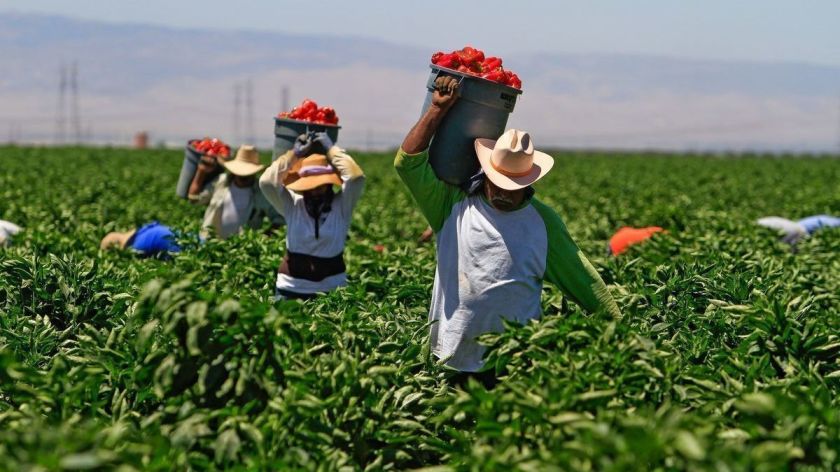California agriculture and the natural resources industries associated with it contribute mightily to California’s economy, according to a new study by the California Community Colleges Centers of Excellence for Labor Market Research, the California Economic Summit and the University of California’s Division of Agriculture and Natural Resources.
When people think of California’s economy, they think of entertainment, information technology and other industries. They may not think of the working landscape including agriculture though, according to Glenda Humiston, University of California vice president, agriculture and natural resources.
“People may be surprised to learn that California’s working landscape accounts for 6.4 percent of the state’s economy, supports more than 1.5 million jobs and generates $333 billion in sales,” Humiston said.
The results of the new study, “California’s Working Landscape: A Key Contributor to the State’s Economic Vitality,” were announced on Nov. 7 by Humiston and Karen Ross, California Department of Food and Agriculture secretary, during the Ecosystem Vitality and Working Landscapes session at the California Economic Summit at the DoubleTree by Hilton Fresno Convention Center in Fresno CA.
To measure the economic impact of the working landscape, which has as its centerpiece agriculture, researchers analyzed federal data associated with employment, earnings and sales income of the nine segments that are essential to the working landscape: agricultural distribution, agricultural production, agricultural processing, agricultural support, fishing, forestry, mining, outdoor recreation and renewable energy.
The researchers’ analysis of 2018 data from the North American Industry Classification System showed the value of the working landscape in California comes in ahead of the health care, real estate, retail and construction industries. The top five economic drivers were government (21.9 percent), manufacturing (10.2 percent), information (9.3 percent), professional, scientific and technical services (7.5 percent), and finance and insurance (6.4 percent).
The researchers found the nearly 70,000 businesses associated with the working landscape paid $85 billion to workers in 2018 and generated $333 billion in sales income. In terms of job numbers, earnings, sales income and number of establishments, four segments dominate: agricultural distribution, agricultural production, agricultural processing and agricultural support.
Agricultural production provides the greatest number of jobs, more than 325,000, and generates the second highest sales income, $61 billion in 2018.

Although agriculture accounts for 79 percent of working landscape sales income, it is important to note that other working landscape segments are sizeable. Forestry for example provides more than 86,000 jobs and $23.1 billion in sales income to California.
In addition to evaluating the contribution of the industries to the state’s economy, the researchers measured the importance and impact of the nine working landscape segments by region. For example, some segments, although relatively small in terms of employment or sales income, are cornerstones of local economies and play a critical role in the livelihoods of communities.
The Los Angeles/Orange County region, the San Francisco Bay Area, and the San Joaquin Valley have the greatest concentration of jobs for agricultural distribution, agricultural processing, agricultural support, mining and renewable energy. The San Joaquin Valley leads in agricultural production, followed by the Central Coast. Los Angeles/Orange County has the most forestry, fishing and outdoor recreation jobs.
The report does not include economic values for ecosystem services provided by California’s working landscape such as clean water, nutritious food and a livable climate, or intangible goods that contribute to human well-being, such as recreation, aesthetic inspiration and cultural considerations.
Farmers and other supporters of California agriculture should shout the results of the study’s findings from the seats of their tractors, tops of barns, on social media accounts and in the halls of the state capitol in Sacramento because agriculture and the associated industries that comprise California’s Working Landscape are a vital part of the Golden State’s economy and culture but, as the University of California’s Glenda Humison notes, receive scant attention and little credit for being the powerful contributor that they are to the huge global economic engine called the California economy.
You can read the full report “California’s Working Landscape: A Key Contributor to the State’s Economic Vitality,” at: http://ucanr.edu/WorkingLandscape. A one-page executive summary is available at: http://bit.ly/2WTA7Vz.







